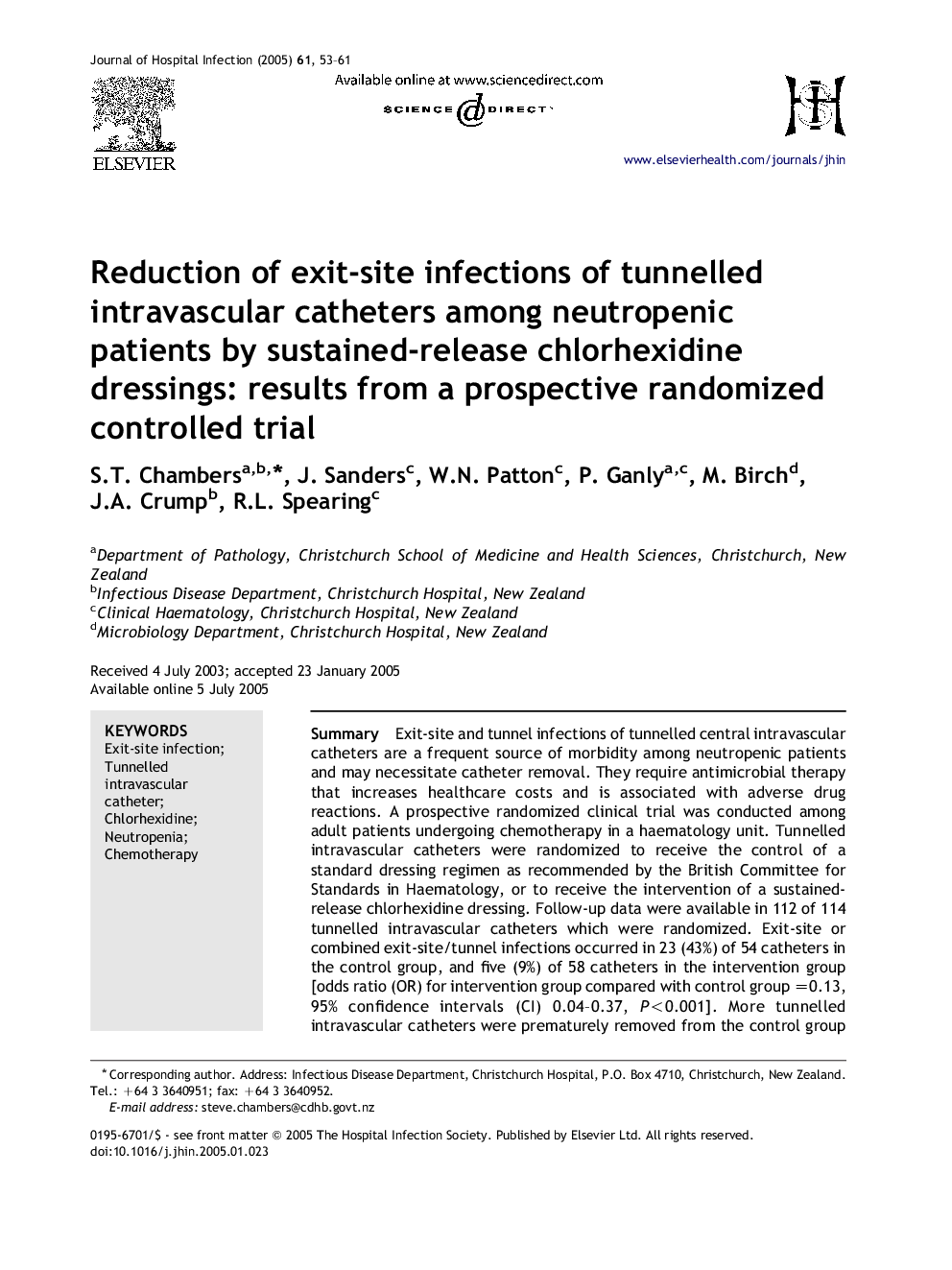| Article ID | Journal | Published Year | Pages | File Type |
|---|---|---|---|---|
| 9269213 | Journal of Hospital Infection | 2005 | 9 Pages |
Abstract
Exit-site and tunnel infections of tunnelled central intravascular catheters are a frequent source of morbidity among neutropenic patients and may necessitate catheter removal. They require antimicrobial therapy that increases healthcare costs and is associated with adverse drug reactions. A prospective randomized clinical trial was conducted among adult patients undergoing chemotherapy in a haematology unit. Tunnelled intravascular catheters were randomized to receive the control of a standard dressing regimen as recommended by the British Committee for Standards in Haematology, or to receive the intervention of a sustained-release chlorhexidine dressing. Follow-up data were available in 112 of 114 tunnelled intravascular catheters which were randomized. Exit-site or combined exit-site/tunnel infections occurred in 23 (43%) of 54 catheters in the control group, and five (9%) of 58 catheters in the intervention group [odds ratio (OR) for intervention group compared with control group =0.13, 95% confidence intervals (CI) 0.04-0.37, P<0.001]. More tunnelled intravascular catheters were prematurely removed from the control group than the intervention group for documented infections [20/54 (37%) vs 6/58 (10%), OR=0.20, 95%CI 0.53-0.07]. However, there was no difference in the numbers of tunnelled intravascular catheters removed for all proven and suspected intravascular catheter-related infections [21/54 (39%) vs 19/58 (33%)], or in the time to removal of catheters for any reason other than death or end of treatment for underlying disease. Thus chlorhexidine dressings reduced the incidence of exit-site/tunnel infections of indwelling tunnelled intravascular catheters without prolonging catheter survival in neutropenic patients, and could be considered as part of the routine management of indwelling tunnelled intravascular catheters among neutropenic patients.
Related Topics
Life Sciences
Immunology and Microbiology
Applied Microbiology and Biotechnology
Authors
S.T. Chambers, J. Sanders, W.N. Patton, P. Ganly, M. Birch, J.A. Crump, R.L. Spearing,
